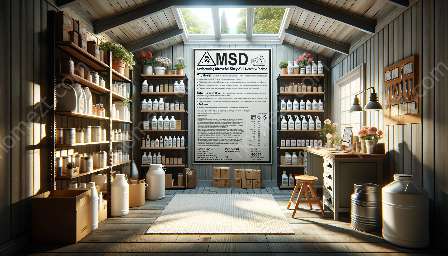Handling hazardous materials requires proper safety equipment to prevent accidents and protect individuals and the environment. This article discusses the essential safety gear, safe storage practices, and home safety measures related to hazardous materials.
Essential Safety Equipment
When dealing with hazardous materials, it is crucial to have the right safety equipment to minimize the risk of exposure and ensure the safe handling and storage of these substances. Some of the essential safety equipment includes:
- Personal Protective Equipment (PPE): This includes gloves, goggles, face shields, protective clothing, and respirators. PPE helps to protect workers from exposure to hazardous chemicals, biological agents, and other harmful substances.
- Emergency Eyewash Stations and Safety Showers: In case of accidental exposure to hazardous materials, emergency eyewash stations and safety showers provide immediate relief by rinsing the affected area with water. They are critical for preventing further damage and injuries.
- Spill Containment Kits: These kits include absorbent materials, barriers, and other tools to contain and clean up spills of hazardous materials effectively. Quick response to spills is essential to prevent environmental contamination and health hazards.
- Labeling and Segregation: All hazardous materials should be clearly labeled and stored separately based on their compatibility to prevent chemical reactions. Segregation helps to minimize the risk of accidental spills and exposure.
- Secure Storage Cabinets: Flammable, corrosive, and toxic materials should be stored in approved safety cabinets that are designed to contain spills and protect the contents from external hazards.
- Ventilation Systems: Proper ventilation is crucial for storing hazardous materials to prevent the buildup of vapor and fumes, which can pose health risks. Ventilation systems should be in place to maintain air quality and reduce the concentration of harmful substances.
- Proper Disposal: Dispose of household hazardous waste, such as batteries, cleaning products, and paints, at designated collection sites to prevent environmental contamination.
- Childproofing: Keep hazardous materials, such as medicines and chemical cleaners, out of reach of children by storing them in secure cabinets and using childproof latches.
- Carbon Monoxide Detectors: Install carbon monoxide detectors to identify any leaks from fuel-burning appliances, which can lead to carbon monoxide poisoning.
- Fire Safety: Implement fire safety measures, such as having working smoke detectors, fire extinguishers, and an escape plan in case of an emergency.
Safe Storage of Hazardous Materials
Proper storage of hazardous materials is essential for preventing accidents and ensuring the safety of individuals and the environment. The following practices should be followed when storing hazardous substances:
Home Safety & Security
Hazardous materials are not only found in industrial settings but can also be present in homes. Proper home safety and security measures include:
By incorporating these safety measures and equipment, individuals can handle hazardous materials responsibly and reduce the risk of accidents and harmful exposure.



